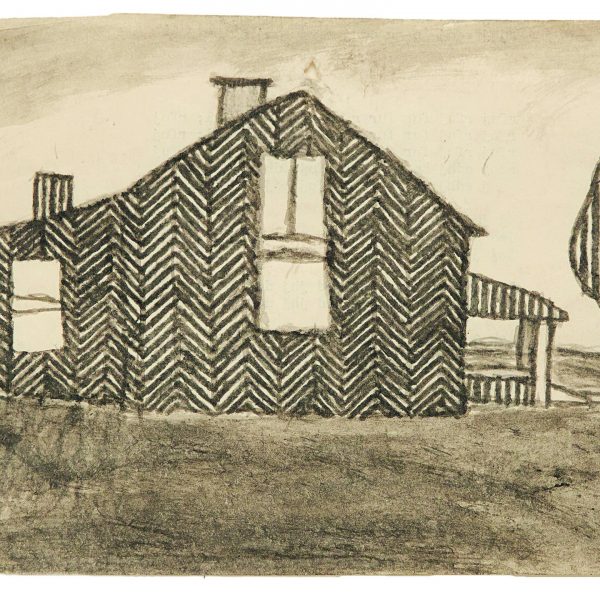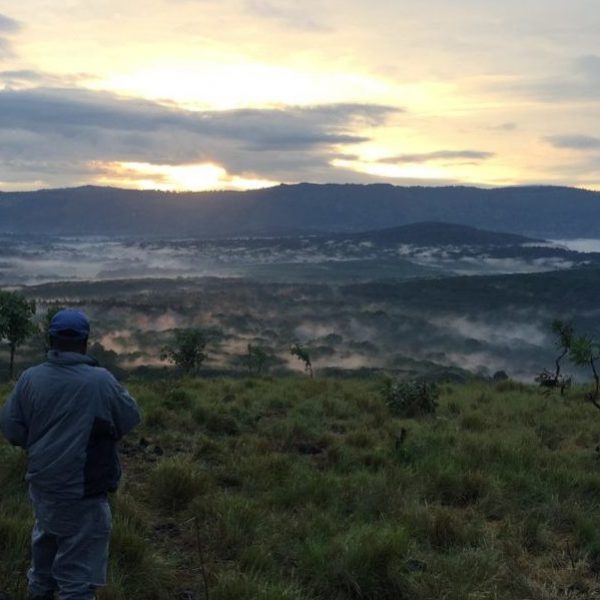3@2 Interview: John and Colleen Marzluff on Dog Days, Raven Nights
We’d like to introduce a new column series for the Yale Press Log: the 3@2 interviews, consisting of 3 questions posed to 2 authors, from right here at 302 Temple Street.
 First up are John and Colleen Marzluff, co-authors of the newly published Dog Days, Raven Nights, in which the husband-and-wife biologist team recall their days as young field scientists in the Maine woods-studying the Common Raven. Fresh out of graduate school in Arizona in 1988, the two set off across the country with their dogs, Sitka and Topper, to study with and join insect physiologist turned ornithologist, Bernd Heinrich, who also wrote the Foreword for the book. For three years in the mountainous wild, they observed, studied, and recorded the behavior of ravens, and trained sled dogs to help them across the wintry terrains, all the while forming the personal relationships that have shaped their careers and friendships, not to mention their marriage. Their answers below are distinguished with the same dog (Colleen) and raven (John) icons used to alternate voices in their book.
First up are John and Colleen Marzluff, co-authors of the newly published Dog Days, Raven Nights, in which the husband-and-wife biologist team recall their days as young field scientists in the Maine woods-studying the Common Raven. Fresh out of graduate school in Arizona in 1988, the two set off across the country with their dogs, Sitka and Topper, to study with and join insect physiologist turned ornithologist, Bernd Heinrich, who also wrote the Foreword for the book. For three years in the mountainous wild, they observed, studied, and recorded the behavior of ravens, and trained sled dogs to help them across the wintry terrains, all the while forming the personal relationships that have shaped their careers and friendships, not to mention their marriage. Their answers below are distinguished with the same dog (Colleen) and raven (John) icons used to alternate voices in their book.
Yale University Press: Your book strongly advocates that students pursue what they love to do. Even doing what you love, there are always…unfavorable conditions. What were the best and worst parts about the long, sometimes fruitless days, in the observation hut?
 Colleen Marzluff: It was “Torture in the Hut”, as the title of the chapter says… Boredom, stiffness, frustration—they were all there. Sometimes you would think, “I got up before dawn for this!?” We couldn’t talk, let alone argue, or the ravens would hear us. We sometimes wrote notes to each other, but for the most part, it was a lot of waiting for something to happen. We couldn’t really read a book or play cards because we might have missed something. A real lesson in patience—sometimes like watching paint dry—solitary confinement with a silent partner.
Colleen Marzluff: It was “Torture in the Hut”, as the title of the chapter says… Boredom, stiffness, frustration—they were all there. Sometimes you would think, “I got up before dawn for this!?” We couldn’t talk, let alone argue, or the ravens would hear us. We sometimes wrote notes to each other, but for the most part, it was a lot of waiting for something to happen. We couldn’t really read a book or play cards because we might have missed something. A real lesson in patience—sometimes like watching paint dry—solitary confinement with a silent partner.
The best was when an experiment yielded results, expected or unexpected; when other critters visited and helped break up the tedium; when we would imagine the birds behaving more like primates we could laugh (silently). Best part is that we survived it. I suppose that could have been a very difficult thing to do for most couples, but we made it!
 John Marzluff: Because we had to be quiet, Colleen couldn’t argue with me : ) . Actually, to me once I was in the hut it was always good. The birds were constantly doing something, either the juvenile flock or the adult pair kept me engaged because you never knew WHAT they might do. One day they would catch a mouse, the next they would play with a toy, or they would utter a vocalization never yet heard. Their activity was constantly amazing to me. Of course the very best times were when an experiment actually worked. For example, when we were investigating the meanings of various vocalizations we would put a loudspeaker into the aviary and broadcast the call of interest. Begs by juveniles under attack, for instance, we believed did two things: cooled down aggressive adults and recruited additional hungry juveniles. With this hypothesis in mind we played begs and other control sounds throughout the aviary expecting to lure our captive juveniles toward the speaker. Sure enough, as soon as the begging began it was as if a dinner bell was rung; the juvenile horde hopped, ran, and flew toward the speaker. If only we could have better read the expression upon their face when they found only a speaker and not a beggar!
John Marzluff: Because we had to be quiet, Colleen couldn’t argue with me : ) . Actually, to me once I was in the hut it was always good. The birds were constantly doing something, either the juvenile flock or the adult pair kept me engaged because you never knew WHAT they might do. One day they would catch a mouse, the next they would play with a toy, or they would utter a vocalization never yet heard. Their activity was constantly amazing to me. Of course the very best times were when an experiment actually worked. For example, when we were investigating the meanings of various vocalizations we would put a loudspeaker into the aviary and broadcast the call of interest. Begs by juveniles under attack, for instance, we believed did two things: cooled down aggressive adults and recruited additional hungry juveniles. With this hypothesis in mind we played begs and other control sounds throughout the aviary expecting to lure our captive juveniles toward the speaker. Sure enough, as soon as the begging began it was as if a dinner bell was rung; the juvenile horde hopped, ran, and flew toward the speaker. If only we could have better read the expression upon their face when they found only a speaker and not a beggar!
YUP: How has your view of the raven changed since your time in Maine?
 JM: In Maine ravens were objects of scientific study. They were intriguing and always interesting to me, but I saw them only as a wild animal that very occasionally interacted with humans. Now I see them as fully interactive with and influential on humans. Not only are they interesting wild creatures, but they are totems and creators to some people, motivators and instigators to others, and the objects of daily interaction to still others. I now see ravens and people as completely intertwined; as we affect them so to do they affect us. We are in no insignificant part who we are because of our species’ coevolution with the raven. So now I believe I better understand ravens. They are animals and they are important cultural icons to many people.
JM: In Maine ravens were objects of scientific study. They were intriguing and always interesting to me, but I saw them only as a wild animal that very occasionally interacted with humans. Now I see them as fully interactive with and influential on humans. Not only are they interesting wild creatures, but they are totems and creators to some people, motivators and instigators to others, and the objects of daily interaction to still others. I now see ravens and people as completely intertwined; as we affect them so to do they affect us. We are in no insignificant part who we are because of our species’ coevolution with the raven. So now I believe I better understand ravens. They are animals and they are important cultural icons to many people.
YUP: How did you find a training class for dogsledding in Arizona? Beyond the necessity for winters in Maine and Idaho, what kept your interest in training sled dogs, specifically?
 CM: In Arizona, we helped place a stray Siberian Husky with a staff member at Northern Arizona University. Through her we found out about a guy who was teaching dogsledding. The dogs needed some exercise and Sitka supposedly had the genes for pulling so we tried the class. One class led to another and we became “hooked”, knowing Maine was in the near future.
CM: In Arizona, we helped place a stray Siberian Husky with a staff member at Northern Arizona University. Through her we found out about a guy who was teaching dogsledding. The dogs needed some exercise and Sitka supposedly had the genes for pulling so we tried the class. One class led to another and we became “hooked”, knowing Maine was in the near future.
Training sled dogs felt very natural to us. As animal behaviorists we saw how we could shape behavior into a product like a well-trained team. There is something about the feeling you have on the back of a sled with a team of dogs that you know and trained, cooperatively pulling you down a trail. As we got faster, we wanted more speed and more dogs. I suppose you could call it an addiction. But, as avid outdoors people who studied nature, it was a perfect fit. Most of the dog sledding people we met had common interests in the outdoors, so the attraction to the social side of things held us as well.
 JM: I stayed interested in running sled dogs for two reasons: first the unique companionship of being part of a canine team and second challenging competition. Running dogs is like being a part of a wolf pack. You have to read the dogs’ emotions and work as a single unit if you are going to be successful. Being successful allows you to see nature in a new light; as seen by a quietly moving, efficient predator. It was always a thrill to imagine what was around the next bend in the trail and to observe how the dogs responded to it. Racing dogs is a great sport rich in history and rivalry. This competition egged me into getting more and faster dogs. As Colleen says, you simply get hooked on going faster, further, and with less effort.
JM: I stayed interested in running sled dogs for two reasons: first the unique companionship of being part of a canine team and second challenging competition. Running dogs is like being a part of a wolf pack. You have to read the dogs’ emotions and work as a single unit if you are going to be successful. Being successful allows you to see nature in a new light; as seen by a quietly moving, efficient predator. It was always a thrill to imagine what was around the next bend in the trail and to observe how the dogs responded to it. Racing dogs is a great sport rich in history and rivalry. This competition egged me into getting more and faster dogs. As Colleen says, you simply get hooked on going faster, further, and with less effort.
John M. Marzluff is a highly regarded scientist known for his work on the ecology and behavioral biology of jays, crows, ravens, and their relatives. He is professor of wildlife science, College of the Environment, University of Washington, and the author of four books, including In the Company of Crows and Ravens. Colleen Marzluff trained in wildlife biology, worked as a research technician, and is an expert in the raising and training of sled dogs and herding dogs. They live in Snohomish, Washington.
Read more about the authors’ adventures in their book, Dog Days, Raven Nights.



